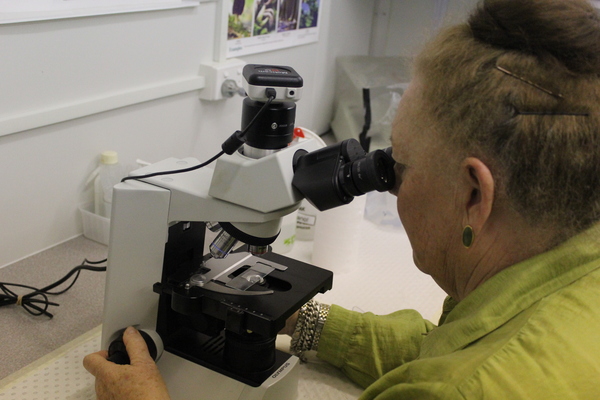By Russell Bennett
“Never tell me something can’t be done – of course it can be done, you just need to find the way.”
SCIENTIST Doctor Mary Cole would never call herself a religious person, but the world-first process she has developed to create ‘memorial trees’ has carried with it some deeply spiritual moments which has her convinced there’s a greater power out there somewhere.
Over the past two years, the Vervale microbiologist and plant pathologist, together with her team at AgPath – her home-based soil biology company – has developed a way to nullify the salt and alkalinity levels of human ash so that people can, essentially, live on as trees after they die.
She was originally approached by Warren Roberts from ‘Living Legacy’, who struggled to come to grips with the sudden passing of a close friend.
“It just came out of nowhere because Warren, the man who kind of started the company, lost somebody and he just didn’t get a satisfactory conclusion to it all,” Dr Cole explained.
“He thought there just had to be a better way.
“He went along to see agriculturalists and they said it couldn’t be done – that you can’t use human ash. But then he got my name and I said: never tell me something can’t be done – of course it can be done, you just need to find the way.”
Mr Roberts came to see Dr Cole about the astonishing idea in February of last year. By December, Dr Cole was confident she could grow any tree in any soil using human ash.
Since then, the project has made global headlines.
“It’s such a lovely story,” Dr Cole said.
“I think Warren said there’s only about three per cent of consecrated ground left in some countries, or even less. Burials are just not going to be possible for much longer.
“The days where you’d buy a plot and you’d have it for 99 years are gone. Now you’re struggling to get 20 or 25 years.”
With her concept – given her background in biology and environmental protection – Dr Cole and her team have found a way for people to become a memorial tree when they die.
“Instead of having a headstone or a plaque in a wall, you’ve got a GPS reading and your tree will probably be in a memorial garden somewhere,” she explained.
“But, at the same time you are a memorial tree another 200 trees are being planted out in the environment. We’re basically going to reforest the planet with this.
“There’s some data that says that in the average lifetime of a human being, it takes 100 trees to negate the impact of our breath on the environment. That’s 100 trees per person in a lifetime. What we’re doing is planting 200 trees, so there’s a net gain.
“Given a continent like Australia, that is going to be really severely impacted by climate change and global warming, the one way to bring rain back is to have forests, because you get your evaporation and precipitation. You’re protecting your soil too.
“Everything about this is positive. It’s just such a great idea that he (Mr Roberts) had, and we’re absolutely delighted that we were a part of it.”







